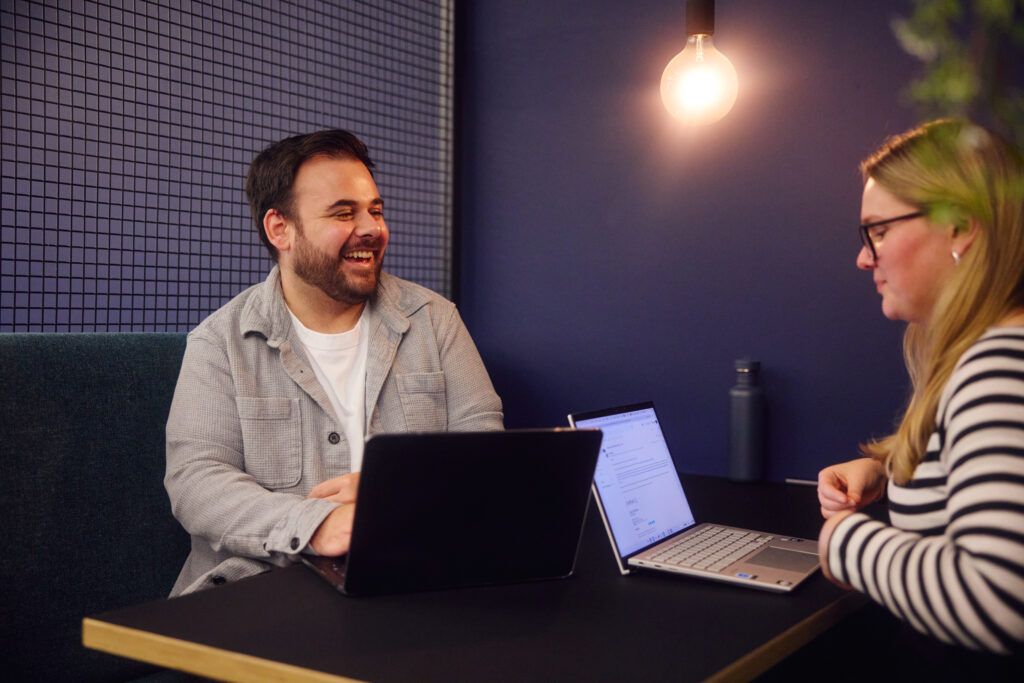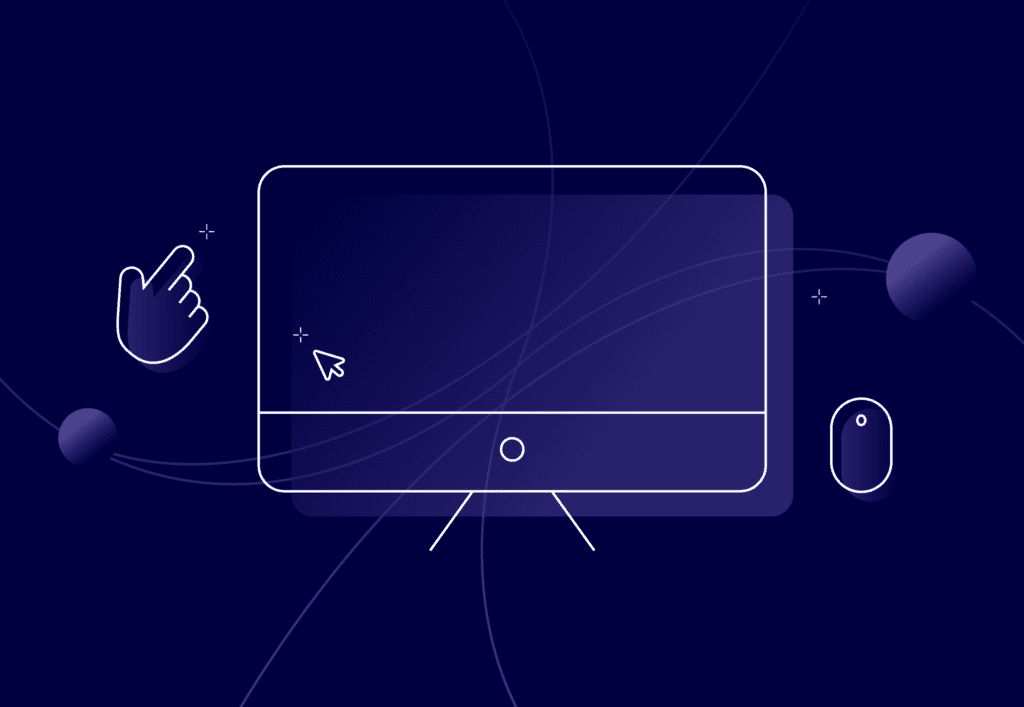
PPC landing pages
Planning, designing and launching landing pages are a key part of our PPC services.
We work collaboratively with our creative team and in-house copywriters to maximise campaign performance. With our design and build service, your business can expect boosted lead quality, increased sales and improved traffic and engagement.
There are multiple methods and best practices that go into our PPC landing pages, and we’re here to reveal some of our best approaches. If professional, high-converting landing pages sound like something you need, get in touch with our PPC consultants today.

What is a PPC landing page?
A landing page is a page that users click through to form a paid ad in the search results. These pages are dedicated to targeting specific keywords, personas and demographics.
Landing pages exist to achieve particular goals, usually to convert users into leads, launch new products or convince customers to download reports or studies.
Creating a PPC landing page requires resources, time and patience. They should be built with conversion rate in mind, utilising best UX practices, quality content writing and creative assets.
Why are landing pages important for PPC performance?
The sole purpose of a landing page is to guide the user along the customer journey to take action and convert. Investing significant time in researching keywords, constructing campaigns, and refining ad copy becomes futile when the landing page lacks quality and a clear purpose. Effectively, if the user struggles to find their desired information from your landing page and the conversion path remains unclear, all prior efforts are a waste of your marketing time and budget.
How we create successful PPC landing pages at Embryo
Our talented team has been building and testing landing pages for over 7 years. Below we have highlighted some KPIs from one of our clients in the mortgage industry, we can see the difference in performance before an Embryo landing page and after.
- 106% increase in conversion rate
- 25% decrease in cost per lead
Our PPC team has outlined 14 best practices that ensure your landing page is equipped to best serve your potential customers and persuade them to purchase or enquire from you and not your competitors.
This may seem obvious but it is often missed by many businesses. We recommend for each service or product you should have a unique campaign that has its own unique, specific landing page.
For example, if you were looking for a new double bed but your landing page included information and images on children’s bunk beds, most users would bounce off the site rather than try to navigate the site to find the correct product page.
If users are greeted with content that is unrelated or irrelevant to their search intent, they’re more likely to bounce from the page without converting. By maintaining consistency between keywords, ads, and landing page content, you create a cohesive user journey that enhances the overall experience.
Landing page relevance is a key factor in determining quality score, and having landing pages that correlate closely with your keywords can improve your ad ranking, reduce costs per click, and increase ad visibility.
Over the years, Embryo has been faced with clients who have struggled to increase their quality scores. If this is you, please get in touch with our award-winning PPC team.
Landing page content plays a significant role in quality scoring within Google Ads.
For those who are unfamiliar with quality scores, this is a score out of 10 (10 being the highest) awarded by Google on how relevant your chosen keywords are to your business. Quality scores are determined by 3 components: click through rate, ad relevance, and finally the landing page experience.
The most difficult component to score highly on is your landing page. A crucial element to improving landing page experience is including keyword-rich content. This proves to Google that your landing page is relevant to the keywords as it can see the alignment from what the user searched for, the ad copy, and finally the landing page.
The benefit of having high-quality scores is that Google recognises you are relevant to users searching that specific term, so they drop the cost per click to allow your business to appear at the top of the search results for cheaper, ultimately, allowing you more clicks for your budget.
The first step to creating an effective call to action is to outline is what is the conversion action you want to push. If you are an ecommerce business, this is likely to be “add to cart” or “buy now”. However, if you are lead generation you can have a variety of conversion actions which may include: get a free demo, get a quote today, request a call back, etc.
At Embryo, our advice to our clients is to not push too many conversion actions on one landing page. This is because, when we give the user too much choice on how to convert, it can actually confuse the user and often we see a negative impact conversion rate.
We would recommend if you have any historic data, to use the conversion action that has shown the highest volume of qualified leads and to use that conversion action only. However, if you do not have this information, we would suggest to A/B test 2 separate landing pages with each conversion action and collect data on which action results in success.
To learn more about crafting an effective CTA, please read our blog written by a member of our talented content team.
For our client landing pages, we recommend having CTA buttons at the top right of your landing page, this is because users read from left to right. Data shows that eyes linger on the right-hand side of the page for longer, therefore placing a CTA strategically on the right-hand side can boost conversion rate. This CTA button should link the user to the form submission page so they can enquire.
CTA buttons should be present on the top navigation bar and if possible made sticky so as you scroll the top bar is frozen to the top of the page and follows the user. This way the CTA is always in their eyeline.
Another landing page best practice includes repeat CTA buttons. Placing a banner that includes a CTA button across the landing page for every other scroll, so it encourages users who have read the lower page content to convert.
This relates back to our first best practice, the landing page should not have conflicting messages with the ad the user has clicked. For example, any seasonal updates that have been written in the ad copy should be reflected on the landing page. This is particularly important when it comes to promotions and offers.
Having consistent messaging from search terms to ad copy to landing page, reassures the user that you have what they are after. It will also instil confidence in your business and they are more likely to purchase or fill out a form.
Online forms should be short, concise and should have as few fields as possible. At Embryo, we ask our clients to keep forms minimal and stick to standard details such as name, number, email, and perhaps a drop-down for which service they are interested in.
This form should be above the fold at all times, this is because users often drop off if they have to insert reams of data, they also might not have some details to hand which may put them off converting. It is best to get details so you can follow up with what other information you may need at phase 2 of qualifying the lead.
Writing landing page content that uses cognitive bias can be powerful when it comes to performance.
Using emotive language can trigger various emotions that can be deployed to create more effective and persuasive content that resonates with our target audience. Ultimately increasing engagement, trust, and conversion rates. influence page visitors’ perceptions, behaviours, and decision-making processes.
Additionally, tailoring your landing page content to align with visitors’ pre-existing beliefs or preferences can increase their likelihood of engaging with your message and taking the desired action.
If you want to get a better understanding of how to increase sales through your landing page content, please read our blog on behavioural biases and persuasive writing techniques.
When you effectively use your unique selling points, it persuades users to choose you over your competitors. This is your chance to differentiate from competitors.
In this day and age, search engine users often click on various websites when they are looking for a service or product. In particular, PPC ads are often placed side by side with your competitors. Featuring USPs can help distinguish your product or service, making it clear to potential customers why they should choose you over others.
PPC landing pages have a limited timeframe to capture a visitor’s attention. When writing your USPs they need to be visible to the user immediately when clicking on your landing page. These should convey the unique benefits of your offering swiftly, ensuring that the targetted audience understands your value proposition almost instantly.
Similarly to USPs, It is important to present the benefits of your product or service so it can be seen instantly.
At Embryo, we urge our clients to communicate the benefits that can alleviate their potential customer’s pain points and ways in which their product or service could improve their lives. This helps make a compelling case for why they should choose you over competitors.
As previously discussed, many people click on various ads whilst in the consideration phase of their buyer journey. Emphasising the key benefits, you can provide the information that potential customers need to make informed purchasing decisions. If these benefits align with their requirements and preferences, we can increase the likelihood of conversion.
Customer reviews serve as powerful social proof. Reviews can reassure potential customers that others have had positive experiences with your product or service. When users see that others have benefited from what you offer, it builds trust and confidence in your business.
It also adds an element of authenticity to your landing page. Every business uses promotional messaging that claims they are the best in the industry. Including reviews that come directly from real customers, gives credibility to your claims and assertions.
Google and Trustpilot ratings can have the same impact on your website traffic. We would advise using the Google or Trustpilot star ratings icon at the top of the landing page. So when a new user sees the landing page they instantly build trust and if they want more detail on your high rating they can scroll down to read customer reviews.
Awards and accreditations signify adherence to high standards of quality. In particular, industries achieving accreditations are a must to ensure you receive your product or service from a legitimate company.
By showcasing these on your landing page, you communicate to visitors that your business operates at a superior level, which can reduce concerns and objections they may have about the reliability or legitimacy of your offering.
It also contributes to a more positive association with your brand. When visitors see that your product or service has been recognised and endorsed by reputable organisations, it reduces the perceived risk associated with choosing your offering, making them more comfortable and confident in proceeding with a purchase.
Imagery plays a crucial role in the effectiveness of PPC landing pages for several key reasons:
Psychology shows that humans are naturally drawn to visual content. High-quality imagery immediately captures the attention of visitors and encourages them to engage with your landing page. Eye-catching visuals can evoke emotions, convey messages, and create a memorable impression, increasing the likelihood of conversion.
High-quality imagery can have the ability to tell a story in a way that text alone cannot. By incorporating compelling visuals that showcase the value proposition or benefits of your offering, you can effectively communicate key messages and captivate the audience, driving them toward conversion.
Some e-commerce companies may want to use a combination of lifestyle imagery. Which looks at how your product may be used in day-to-day life.
We encourage our lead generation clients to always use imagery that involves humans. As services can be intangible, companies often use imagery that conveys the end product of their service. We have found that adding imagery of people can humanise your brand and showcase the personable aspect of your business.
Above the fold in short means the screen you are presented with before you scroll. The analytics we have here is that the user should be presented with all the information possible for the user to make the purchase or fill out the form. These features have been mentioned above but also listed below:
- Headline that features keyword
- CTA
- USP
- Trust Signals
- Imagery
Including these elements above the fold ensures that every visitor is presented with enough information for them to be persuaded to convert without navigating the page. However, we need to be careful that including all these elements is not visually overwhelming for the user as this could result in them bouncing off your site. We encourage our clients to A/B testing landing pages if they have a lot of resources for the above information. This way, we can review the data to figure out what landing page components result in the highest conversion rate.
For many industries, their website traffic is dominated by mobile device users. It is important that we review the layout of landing pages on mobile to ensure it is user friendly.
This can reduce bounce rates as formatting can look entirely different and in some cases squished if we do not adjust for mobile viewing purposes.
Additionally, Google prioritises mobile-friendly websites in its search results, especially for searches conducted on mobile devices. A mobile optimised landing page is more likely to rank higher in mobile search results, increasing visibility and attracting more traffic.
If you are keen to find out what a high-converting landing page looks like, please get in touch with us. Our highly skilled award-winning PPC team has helped produce and reviewed hundreds of landing pages to lift campaign performance. Our PPC specialists work closely alongside our UX and content team to ensure your landing page is equipped to improve conversion rate.
Additionally, if you are interested in us creating a landing page please get in touch here to enquire about a package.
Array
(
[section_id] =>
[margin_top] =>
[margin_bottom] =>
[padding_top] =>
[padding_bottom] =>
[enable_form_cta] => 1
[enable_image_full_height] => 1
)
Want support with your PPC landing pages?
Our team of PPC experts are ready to help you take your PPC landing pages to the next level.
SwissTimepieces
SwissTimepieces
-
350
Purchases via PPC with an average order value of £15,000
-
150,000
Landing page views from social media ads
-
£63
Earned in revenue for every click of a PPC ad
-
150,000
Landing page views from social media ads

